Russian Nutlet
Well, the city itself in the modern sense of the word, that is, not a fortress, but the residential community itself, moved from the island to the mainland, as we remember, as early as the 16th century. From those times, nothing seems to be left; the starting point of the development of Shlisselburg that we see now was precisely his return to the bosom of the Russian state. The epicenter of the ancient sights - Cathedral Square and its neighbor, Red. At the Cathedral, of course, the city cathedral, built under Catherine II (1764 year), but in the style of the archaizing “like-as-Peter” baroque, it must be assumed, it is addressed to the first emperor. With a powerful European-style spire on the bell tower, the cathedral, of course, looked much more impressive, but over the years it lost the spire. Next to it is the Nikolskaya Church, which, apparently, was once a baroque one, but during the turbulent 20th century it lost all its architectural special features. In Red Square there are remains of a guest yard, a park with ship cannons flowing smoothly into a waterworks, and an Admiralty anchor raised from the bottom of the Neva. Two squares are connected by the old bridge - probably the most classic of all bridges, for its spans do not rest on traditional bulls and abutments, but on the most natural columns, even with something like capitals.
This bridge is spread over the Staroladozhsky Canal. It is now almost completely dried up, although in the 18th century it was not only the largest of such structures in Europe (117 kilometers), but also the most important water artery. The fact is that the “window to Europe” could not be considered completely open, until they established an uninterrupted water route from the Baltic to the depths of Russia. Theoretically (as they say, on the map) such a path existed, it lay through Lake Ladoga. But in fact, he was fraught with many dangers. Ladoga is capricious, it often storms here, as they say, in a sea way: the height of the waves reaches six meters. Riverboats cannot keep such a wave, in the season of winds, the Ladoga navigation had to be closed, or to suffer inevitable losses, not to mention the loss of human life.
They began to dig a canal bypassing the lake on the southern coast by decree of Peter in 1719, but private contractors were building so slowly and carelessly that four years after the personal inspection, the emperor ordered the construction managers to arrest. The case was put "on state accounting", although it really turned around after the death of Peter. In the summer of 1725, 7 attracted thousands of civilian soldiers and two and a half times as many soldiers, as a result of doing it in five years. In 1731, the first ships went, but the first mistakes were revealed. They finalized and ensured normal shipping by building locks in Shlisselburg and Novaya Ladoga. And even after that, a severe drought threatened to completely paralyze the movement, which happened in 1826. They wanted to deepen the channel, but could not find a contractor. As a result, it was decided to dig a new waterway - parallel to the old, but closer to Lake Ladoga, while doing without the complex system of locks.
It is not done soon. Forty years later navigators used old Petrovsky channel, Novoladozhsky was opened only in 1866 year. But as soon as they opened it, the old one was completely abandoned. And if Staroladozhsky still looks like something in Shlisselburg ... well, at least filled with water, then it looks more like a groove throughout the rest of its length. And the Novoladozhsky is still in effect - according to it, small-size vessels pass by the treacherous lake. Big ones have to make their way through Ladoga storms, giving passengers unforgettable, I must say, sensations.
SHLISSELBURG AS A PRISON
But back to the island of Nut.
Having lost its military significance, the fortress Shlisselburg turned into a prison. They sent political prisoners there. True, initially no special casemates existed - the prisoners were placed either in the former barracks, or in the Menshikov’s house and the Sovereign’s house (not preserved).
Seriously, Alexander III took up the prison system. After the murder of his father, he realized that it was time to take up the suppression of revolutionary sentiment, that too many insurgents, terrorists and disturbers of order had divorced. The emperor himself did not conceal that Shlisselburg should become “a prison for his personal enemies - for terrorists ... for those because of whom he was locked up in Gatchina as a prisoner of war of the Russian revolution”.
The emperor personally developed a regime for the maintenance of prisoners, he himself was engaged in organizing the protection of the fortress. When the construction of the New Prison was over, Alexander and his family visited the fortress with the inspection and summed up: "This is the strongest and most unpleasant punishment."
The jailers in Shlisselburg took only the most reliable and proven gendarmes. Their salary was significantly higher than that of their colleagues from regular prisons, but the requirements for them were completely different. They, in fact, like the prisoners, broke all ties with the outside world, not having the right to talk to any prisoners or to each other. After all, they had to deal with the most dangerous political criminals. Ordinary robbers will begin to be sent to the fortress much later.
The conditions of detention in Shlisselburg were exceptionally harsh, because the prison was originally planned for solitary confinement, the most stringent. In the Old Prison there were 10 cameras, and in the New one - 40. The description made by one of the prisoners - M.V. New Russian. Thus, the cells of the Old Prison constituted ten steps along the diagonal, slightly above human growth there was a window, and the glass in it was frosted. The iron bed was flat for the day, the floor was asphalted. The role of the table was played by a small board attached to the wall. In the same place on the wall hung instructions familiarizing prisoners with prison regulations. Prisoners were scared of death and corporal punishment, but in practice these threats were rarely executed: only two were executed, and no one was flogged, fearing that prisoners, who were mostly free-thinkers and noblemen at that time, would not tolerate such treatment.
Other measures were used more often - depriving tea, a mattress on a bed, imprisonment in a dark or light prison cell ... But as a reward for exemplary behavior, a prisoner could count on admission to the library and to communicate with the priest (do not forget that the conclusion was a single ). Only at the end of the 19th century, 80, were prisoners allowed to make pencil notes, clean up the area and even make a garden. The library was replenished with books on philosophy, mathematics and stories. At about the same time, in the prison building, they renovated, but not to improve the conditions of detention, but to minimize the possibility of escape or communication between prisoners, because they managed to keep in touch with each other through the sewer system! In the same period, it was decided to remake the cells so that the prisoners were always in front of the warden, unable to get out of his field of vision.
Who only did not contain in these walls for all their history! Almost 10 years (half of his life, from 1756 to 1764 year) in Shlisselburg spent heir to the throne, John Antonovich (Ivan VI). They kept him in a special cell, "so that no one could see the prisoner." It seems that the French story about the "Iron Mask" did not give rest to our royal personages. Tsar Peter's first wife Yevdokia Lopukhina and his sister Maria Alekseevna, involved in the plot of Tsarevich Alexei, languished here.
And then the time came for other conspirators — the Narodnaya Volya, the terrorists, the revolutionaries, the rebels. In Shlisselburg, older brother V.I. Lenin Sasha Ulyanov and his friends, impudently encroaching on the tsar. In place of their execution, another prisoner - M.F. Frolenko - planted an apple tree. The tree bloomed every year until it died during one of the Nazi raids aviation. A new tree appeared 15 years after the end of the war - it was planted by members of the Shlisselburg defense.
There were other famous political prisoners in the fortress. Most did not survive the harsh conditions of detention. But some were lucky to get out. Among them, for example, Vera Figner members of the People’s People’s Movement (having spent years in prison 20) and the aforementioned Mikhail Frolenko, revolutionary Nikolai Morozov ... I would like to tell about the last two in a little more detail.
Frolenko was one of those who “had the honor” among the most dangerous and unreliable to be transferred from Alekseevsky ravel Petropavlovka to Shlisselburg. He got there badly ill - with scurvy, rheumatism, a paralyzed arm and a weakened ear. In the past, a materialist and a pragmatist, now Frolenko believed in God (later he said that he suddenly felt the need for God, as he is portrayed on naive village iconostasis: in God - an old man with a gray hair, who looks at the world from a cloud).
In parallel with religious studies, Frolenko became fascinated by criticism of the theories of Marx, Darwin and his own interpretation of various physical laws.
Another rebel, Morozov, spent a quarter of a century in Shlisselburg. During this time, managed to learn eleven languages, write a lot of works in chemistry, physics, aviation, astronomy and political economy! After the revolution, he published all his works, became a teacher and director of the PF Natural Science Institute. Lesgaft. His name even called the village opposite the Schlusselburg fortress - Morozovka.
In the end, any prison is not only a place for serving sentences, but also a penitentiary institution, that is, a correctional institution.
NEW AGE
Prison ceased to exist in February 1917. Then, on a wave of revolutionary sentiment, a group of workers simply turned into a fortress and demanded the release of all political ones. The prison authorities had to call the local "authority" to compile a list of these. Hardly out of prison, the former prisoners demanded the release of everyone else, and this, no less than six hundred people: murderers, rapists and other criminal mob. It is said that they were all built in the courtyard and asked to swear that they would give up their anti-social activities. This the prisoners did, after which they were provided with documents in which it appeared that they were being released “by the will of the insurgent people”. Whether they have fulfilled their promises, now nobody knows, but it is unlikely: the subsequent events that shook Russia did not have any effect on this.
As for Shlisselburg, already in the first days of March, the Revolutionary Committee ordered the prison to be burned, as they say, to its foundations. The corps flamed for several days ... so that in ten years the fortress was restored and turned into a Museum of the Revolution.
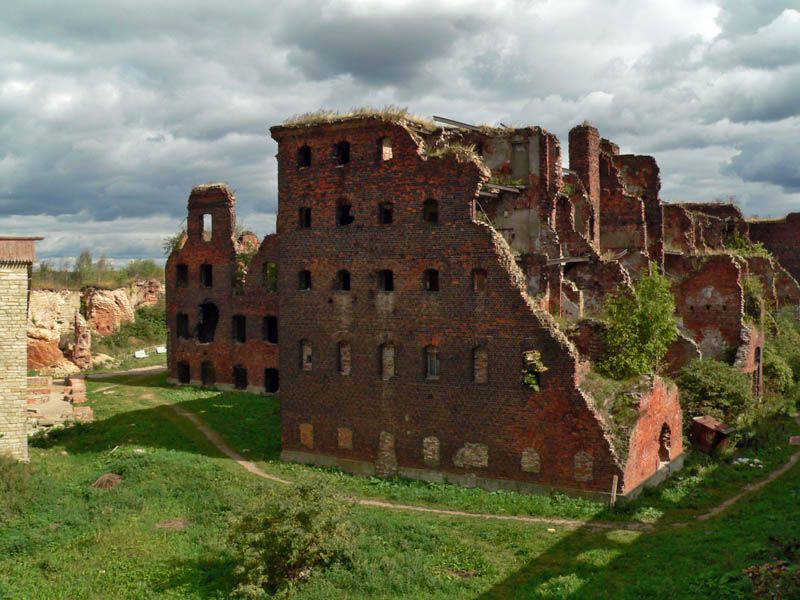
And then there was a war. The Germans themselves occupied the city in early September forty-first. An attempt to repulse him with a “cavalry charge” of the small Shlisselburg assault failed miserably, but the Nazis failed to take the fortress on Orekhovy Island! Ancient stronghold and in the twentieth century showed its impregnability! The fortress was defended by units of the 2nd Rifle Regiment of the 1st Division of the NKVD Troops, the 409th Marine Artillery Battery of the 302nd Separate Artillery Division of the Baltic Fleet and a group of sailors of Ladoga flotilla... and that’s it. Truly a handful of people accomplished the impossible, lasting as long as five hundred days under continuous shelling and bombing, which turned walls, towers and other structures into solid ruins (most now look the same as in that war). The soldiers swore an oath, the words of which were later cast at the memorial to the heroic defenders: “We, the soldiers of the Oreshek fortress, swear to defend it to the last. None of us will leave her under any circumstances. They leave the island: for a while - sick and wounded, forever - dead. We will stand here until the end. "
And the strong Oreshek did not allow the invaders to squeeze the source of the Neva, to transfer to the other side, to cut the Road of Life, which supplied the besieged Leningrad! Throughout all these long days, our troops sought to unblock the city on the Neva precisely from the side of Shlisselburg (from the Sinyavino frontiers). They suffered heavy losses, failed, but eventually succeeded. 12 January 1943 was launched by Operation Spark, launched by the 67 Army of the Leningrad and 2 Shock Army of the Volkhov Fronts. Six days later they joined, freeing Shlisselburg and clearing the entire south coast of Ladoga from the enemy.
In 1944, the city was renamed into Russian style - Petrokrepost. This name he wore to 1992 year.
And the feat of the Soviet soldiers who defended Oreshek was immortalized by the Oath memorial. It is installed directly in the ruins of the destroyed by German shells (and left so in memory of the nightmare of war) St. John the Baptist Cathedral.
On this little piece of land - Orekhovy Island - the epoch, achievements and destinies are intertwined in one tight knot.
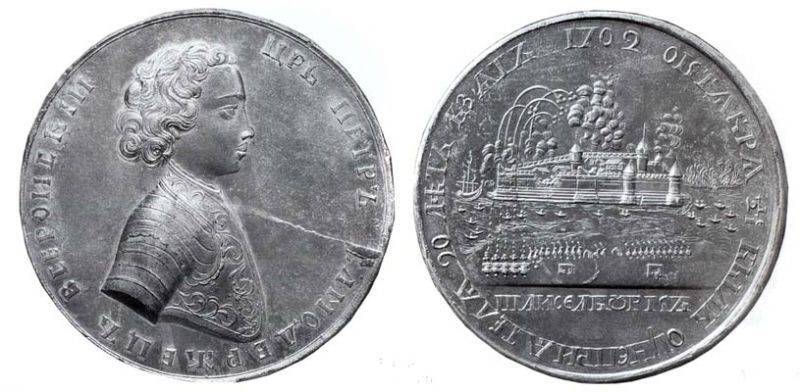
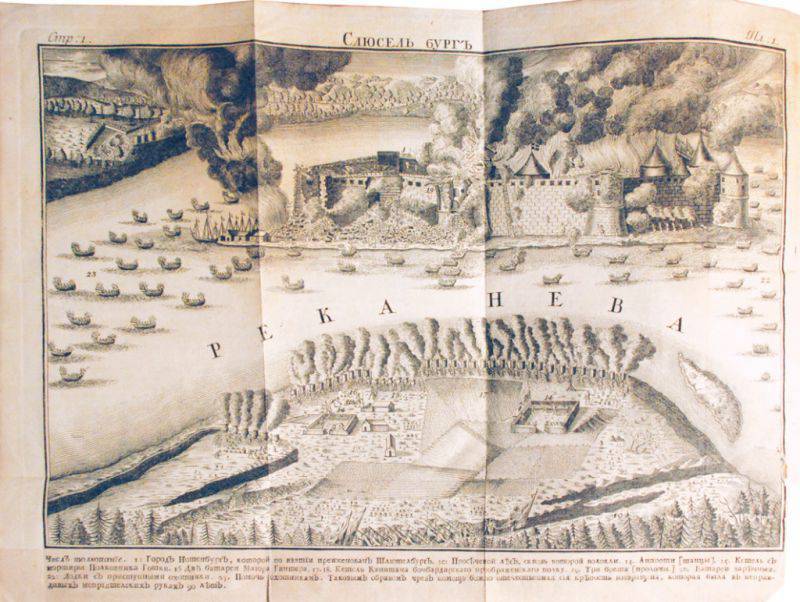
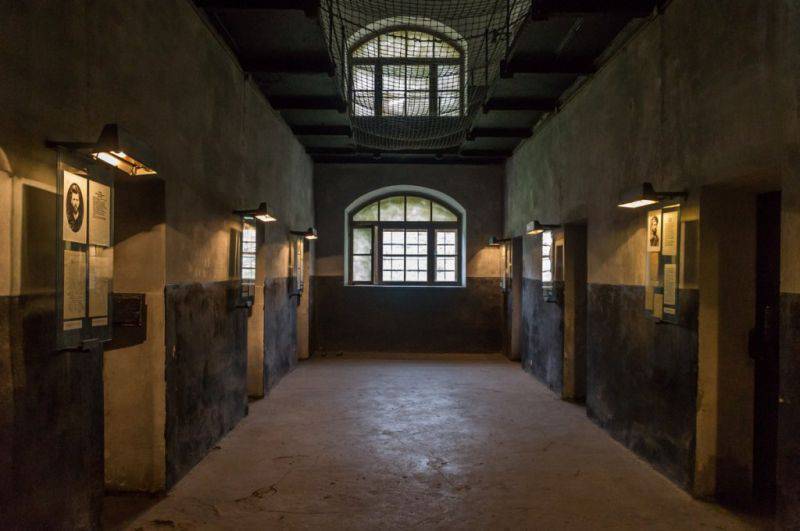
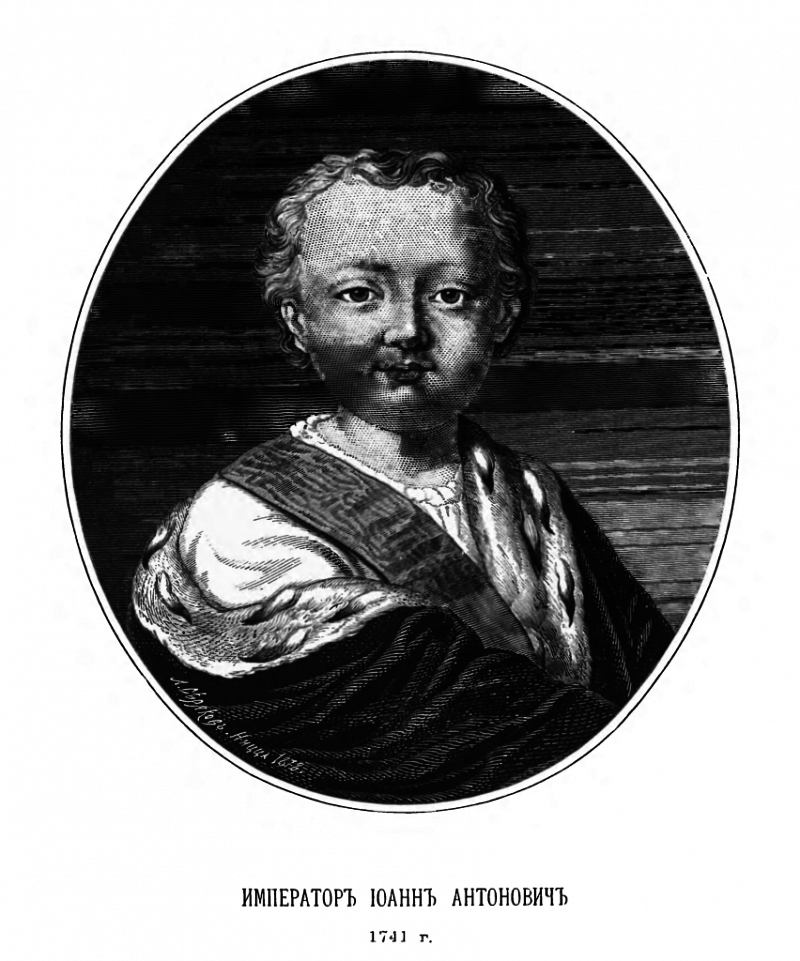
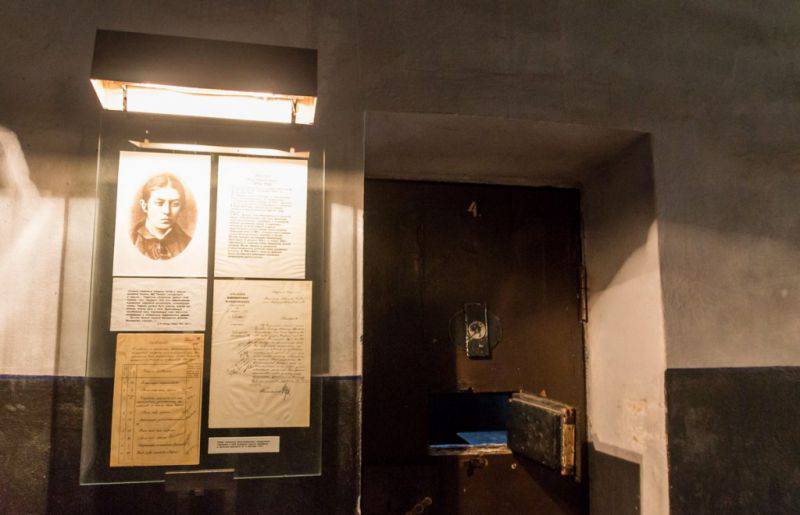
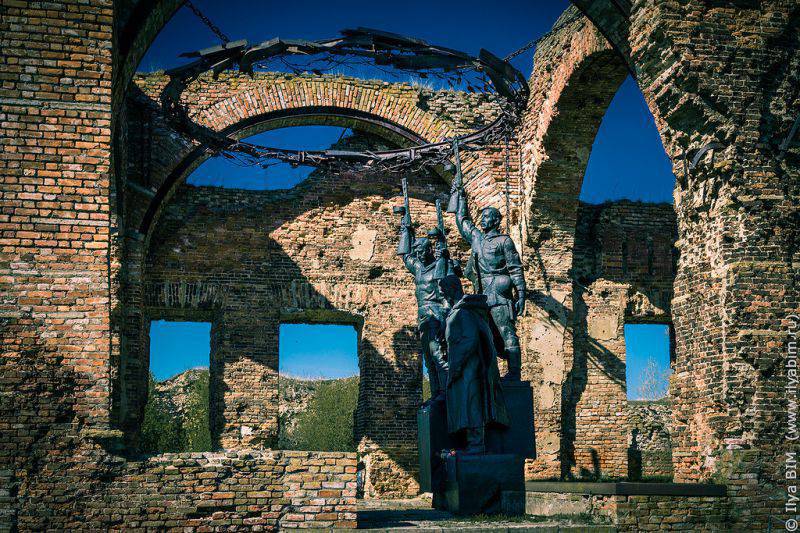
Information